The Signalling Centre
The Signalbox – 1870
The Signalbox – 1870 area looks at the way control of signals and points were brought together at one location and considers interlocking, the role of the Signalman, Absolute Block, and the Railways Act of 1889.

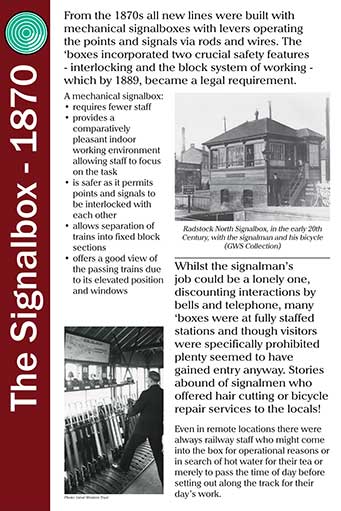
From the 1870s all new lines were built with mechanical signalboxes with levers operating the points and signals via rods and wires. The ‘boxes incorporated two crucial safety features - interlocking and the block system of working - which by 1889, became a legal requirement.
A mechanical signalbox:
- requires fewer staff
- provides a comparatively pleasant indoor working environment allowing staff to focus on the task
- is safer as it permits points and signals to be interlocked with each other
- allows separation of trains into fixed block sections
- offers a good view of the passing trains due to its elevated position and windows
Whilst the signalman’s job could be a lonely one, discounting interactions by bells and telephone, many ‘boxes were at fully staffed stations and though visitors were specifically prohibited plenty seemed to have gained entry anyway. Stories abound of signalmen who offered hair cutting or bicycle repair services to the locals!
Even in remote locations there were always railway staff who might come into the box for operational reasons or in search of hot water for their tea or merely to pass the time of day before setting out along the track for their day’s work.
The visitor is introduced to the signalling on the Branch line at Didcot, especially Frome Mineral Junction Signal Cabin of 1875, and Radstock North Box of 1909.
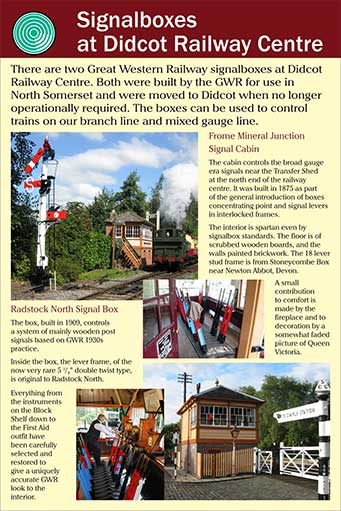
There are two Great Western Railway signalboxes at Didcot Railway Centre. Both were built by the GWR for use in North Somerset and were moved to Didcot when no longer operationally required. The boxes can be used to control trains on our branch line and mixed gauge line.
Frome Mineral Junction Signal Cabin
The cabin controls the broad gauge era signals near the Transfer Shed at the north end of the railway centre. It was built in 1875 as part of the general introduction of boxes concentrating point and signal levers in interlocked frames.
The interior is spartan even by signalbox standards. The floor is of scrubbed wooden boards, and the walls painted brickwork. The 18 lever stud frame is from Stoneycombe Box near Newton Abbot, Devon. A small contribution to comfort is made by the fireplace and to decoration by a somewhat faded picture of Queen Victoria.
Radstock North Signal Box
The box, built in 1909, controls a system of mainly wooden post signals based on GWR 1930s practice. Inside the box, the lever frame, of the now very rare 5 1/4” double twist type, is original to Radstock North. Everything from the instruments on the Block Shelf down to the First Aid outfit have been carefully selected and restored to give a uniquely accurate GWR look to the interior.
Much of the exhibit is laid out loosely in the form of a signalbox with lever frame, block shelf, and diagram, though there is no intention to produce a replica ‘box as such.
The lever frame allows visitors to operate two home signals (one of which also has a signal repeater connected), whilst the Block Instruments and Bells allow for the demonstration of passing trains from ‘box to ‘box. Everything has been kept as simple as possible with no interlocking to allow for easy interaction with visitors.
Also in the display are some original artefacts of Frome North and Radstock North Signalboxes and the awards which Bristol Group has received in respect of the Signalling Project.
Principal Exhibits
| Description | Original Location (where known) | |
|---|---|---|
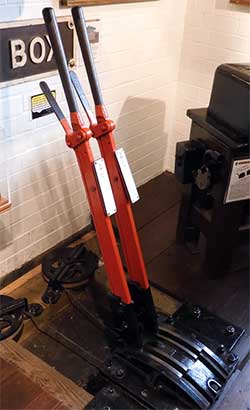 |
Two Lever Ground Frame (controlling the two signals below) | |
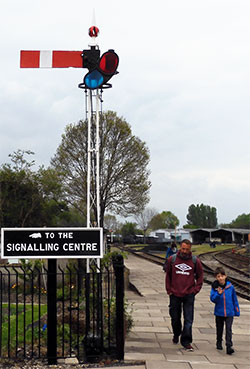 |
GWR Pattern Lattice Post Home Signal (Outside) | Wheatley |
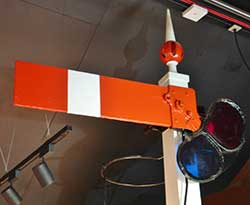 |
GWR Wooden Post Home Signal This is a recreation of a typical, albeit small, GWR wooden post home signal. Based on a new wooden post, it incorporates a selection of GWR fittings. An arm repeater is fitted. It is sited, slightly away from the main signalbox display, in that part of the building offering the highest clearance! | Finial, ladder and lamp platform ironwork all came from Wheatley. Other parts from S&T stock. |
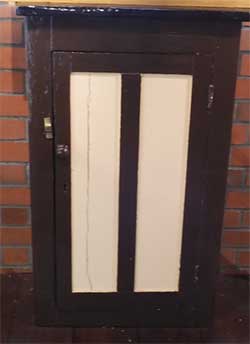 |
Signalbox Single Cupboard | |
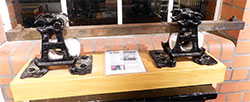 |
Section of rodding demonstrating 'frictionless' rollers | |
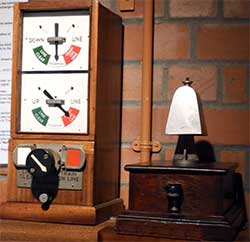 |
GWR 1947 Pattern Double Line Block Instruments (3) |
|
GWR Block Bells (3) |
||
 |
Framed Signalbox Diagram |
|
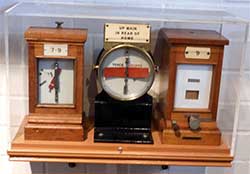 |
Signal Repeater |
|
Track Circuit Indicator (brass drum type) |
Oxford North Box |
|
Lamp Out Indicator |
||
 |
Signalbox Nameboard - Frome North Box |
Frome North Box |
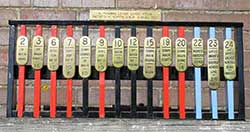 |
Brass Lever Leads - ex Radstock North Box |
Radstock North Box |
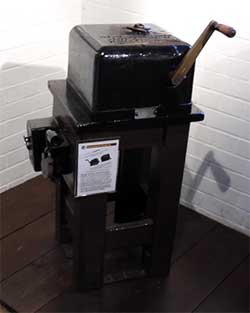 |
Hand Generator |
|
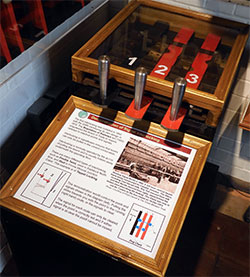 |
Tappet Locking Demonstration |
|
 |
GWR Backing Signal |
|
 |
Illuminated Diagram Case from Launceston |
This area also includes some further exhibits:
| Description | |
|---|---|
Video presentation showing how the Webb-Thompson Electric Train Staff system is used to control trains on the Branch Demonstration at Didcot |
|
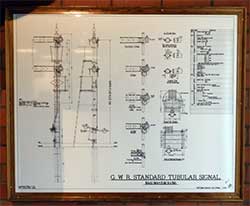 |
GWR Diagram of tubular post signal construction |
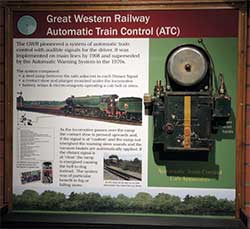 |
Automatic Train Control display, incorporating an ATC cab unit (ex-diesel locomotive) |
Automatic Train Control ramp, height gauge |
|
Automatic Train Control - Locomotive plunger equipment |
To return to The Signalling Centre page - Simply close this window